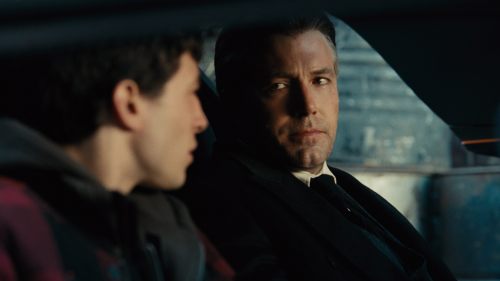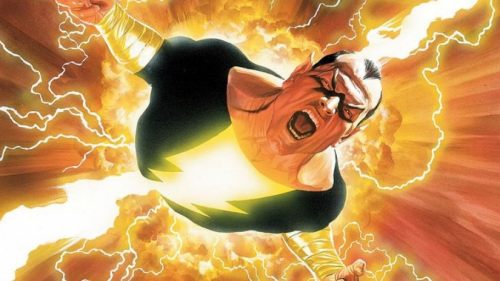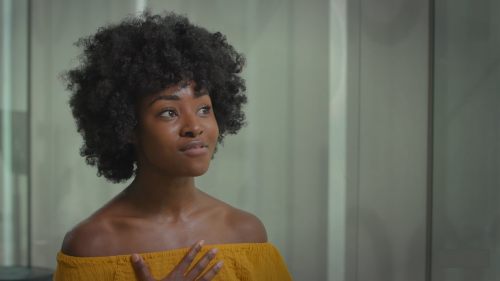Barbara Gordon Is Whedon’s BATGIRL. That’s Great
After yesterday’s head-spinning news that Joss Whedon (as in Buffy, Firefly and Avengers Joss Whedon) would be bringing Batgirl to the big screen, the good folks at EW managed to give us a little more clarity on what exactly that means. This won’t just be the first Batgirl solo film, it’ll also be the cinematic debut of Barbara Gordon. Alongside Whedon’s involvement, that might just be the best thing about this.
We’ve seen a couple of versions of Batgirl in live-action before, most notably Alicia Silverstone’s Barbara Wilson in Batman & Robin, where she was re-imagined as Alfred’s niece. If the “real” Babs’ last name hasn’t tipped you off, she’s the Commissioner’s daughter, and she has been since she was created for the Adam West Batman series fifty years ago – she debuted in the comics only a few months prior. The other time she showed up in the flesh was Birds of Prey, the short-lived, the short lived WB series, where she took up the mantle of Oracle. I haven’t seen the show, but I bring it up because Oracle is somewhat relevant to what we might see in Whedon’s Batgirl.
Back in 1988, Alan Moore and Brian Boland created The Killing Joke, a standalone comic notable for a great many things, including its unfortunate treatment of Barbara. In order to break Jim Gordon, The Joker shot her through the spine and took some compromising photos (there’s debate as to the extent of it; sexual assault is a common interpretation), after which the incident was worked into comicbook canon. Barbara remained wheelchair-bound for the next two decades, guiding the Bat-Family behind the scenes as a high-tech hacker until it was time for DC to go undergo another re-launch.
In 2011, Gail Simone was tasked with bringing Batgirl back along with artists Ardian Syaf and Vicente Cifuentes, in a post-rehab story that saw Barbara back on her feet. This Barbara is said to be the starting point for Whedon’s Batgirl film, a development that makes sense given how far into “established continuity” the current DC films take place. The Joker and/or Harley appear to have murdered one of the Robins (a la A Death In The Family), and the recent Justice League trailer hints at Batman once having had a team of his own. The folks at WB also have Nightwing in the works, the post-Robin alter ego of Dick Grayson, so it’s safe to assume the Bat-Family was a mainstay of Gotham at one point. It’s pretty fantastic that Joss Whedon gets to help bring them back.
This probably also means The Killing Joke happened in the universe, or at least something like The Killing Joke that left Barbara in a wheelchair. The story has been a point of contention for a while now, an undeniable classic with some ugly elements that are better left in the past, but what the Simone/Syaf/Cifuentes re-introduction did was help Barbara reclaim a part of that narrative. Their approach to re-establishing Barbara as a heroic ass-kicker involved dealing with the Joker fallout on two fronts; first, her firearm-centric PTSD, and second, her post-recovery survivor’s guilt, owing to the folks who weren’t able to walk again like she was. These two things further aligned her with the original intent of her creation (What if Batman, but girl??) by approaching two major elements of Batman psychology with an even, complex hand. The latter was an especially important metatextual approach, given how many readers with disabilities Barbara had inspired as Oracle, and while it’s hard to predict how much of these elements we’ll see in the film (Would Joss Whedon have signed on without significant creative control after his experience during Age of Ultron?), it’s safe to say there’s more than enough by way of material to draw from if the New 52 is the starting point.
The debate over The Killing Joke resurfaced in 2015 thanks to a controversial variant cover that depicted Barbara in a terrified, powerlesss position with The Joker looming over her. Without dredging up the conversation again, the long and short of it is even artist Rafael Abuquerque agreed to the cover being pulled since many found it unsettling and it didn’t align with the book’s content or readership (variant covers are sometimes commissioned without input from a comic’s creative team), with the folks behind the book on pretty much the same page. This didn’t stop fanboys from creating a fuss though (by “fuss” I mean “death threats) and with the recent animated Killing Joke movie doing some questionable things with Barbara, the book’s legacy has been far from ideal despite being one of the best Batman stories ever put to print; I’m sure we’ve all heard the “cripple the bitch” comment behind the scenes that makes even Moore look back at it with regret.
The nature of The Killing Joke’s centricity in male-dominated comic fandoms is something Whedon is likely aware of, so even if the films’ canon allows for similar events to have taken place, it’s hard to imagine this going in the direction of an explicit visual portrayal, even via flashback. Besides, no one really wants to see Jared Leto’s Joker in a floral shirt. With so much of the Bat-Family history having taken place off screen, telling us where this Barbara has been doesn’t have to come at the cost of female viewers, especially if where she’s going is the more important part of the story.
With the kind of films on the rest of DC’s slate, completely dark & dreary doesn’t seem to be the default any longer. Even the Justice League movie appears to have levity, and you don’t hire Joss Whedon if you want a straight-faced, joyless meditation on pain. You hire him for fun, complex inter-personal dynamics, which also means Batgirl might not be the only member of the Bat Family we see.
Anthony Breznican at EW says the film will follow Gail Simone’s “harder-edged storyline,” at least in comparison to the subsequent Batgirl of Burnside arc by Babs Tarr, Cameron Stewart and Brendan Fletcher, so even if the film is distinctly Whedon-esqe, we can probably still expect it to feel like a part of this DCEU. I do hope it incorporates elements from the Burnside run (it’s fun, Babs has a cool costume, and there’s a pretty diverse supporting cast), though it doesn’t seem like WB would want to skew younger and more female-centric for this particular series despite the comic connecting like gangbusters. Plus, if the Bat-Family’s been around a while and Commissioner Gordon is nearly seventy, a high-school aged Batgirl doesn’t really fit.
Whedon’s the right guy for this for a number of reasons, but primary among them is perhaps Astonishing X-Men, an action-heavy comic saga that begins with an older, returning Kitty Pride as its focus. Where he was tasked with introducing the world to The Avengers on film, his Batgirl swill serve as a re-introduction in more ways than one. It’ll re-establish Batgirl as an iconic DC presence after two decades of mainstream absence, and it’ll give us a character who’s been through some stuff in this universe (Whedon imbued Kitty’s return to the X-Mansion with a distinct sense of nostalgia; don’t be surprised if we see Barbara returning to Wayne Manor), and lord knows the places and stories that fill the DCEU peripheries need some actual weight to them beyond fan-service.
Batgirl doesn’t have a release date yet (or an actual title for that matter), but with Whedon on board to write, direct and produce, it’ll probably be worth the wait. I hope she beats up Jared Leto.



